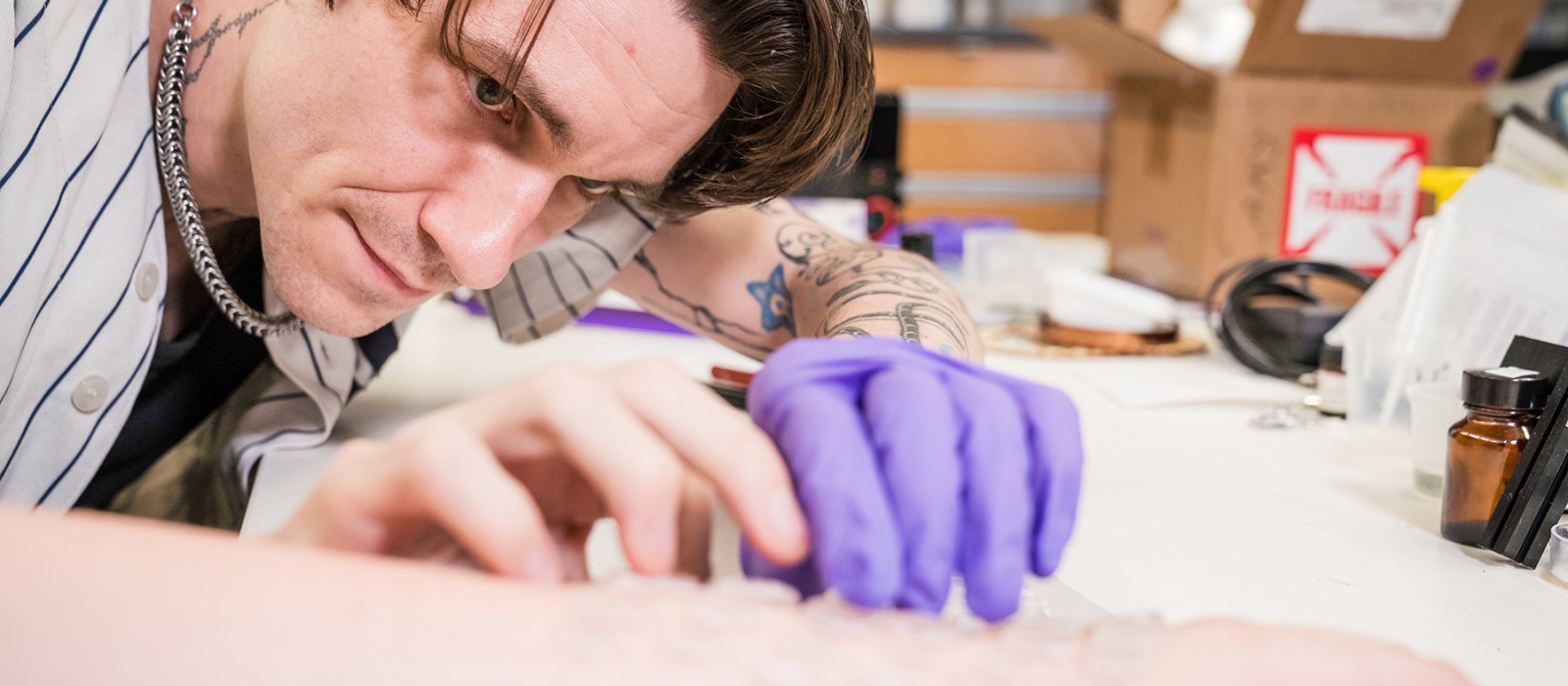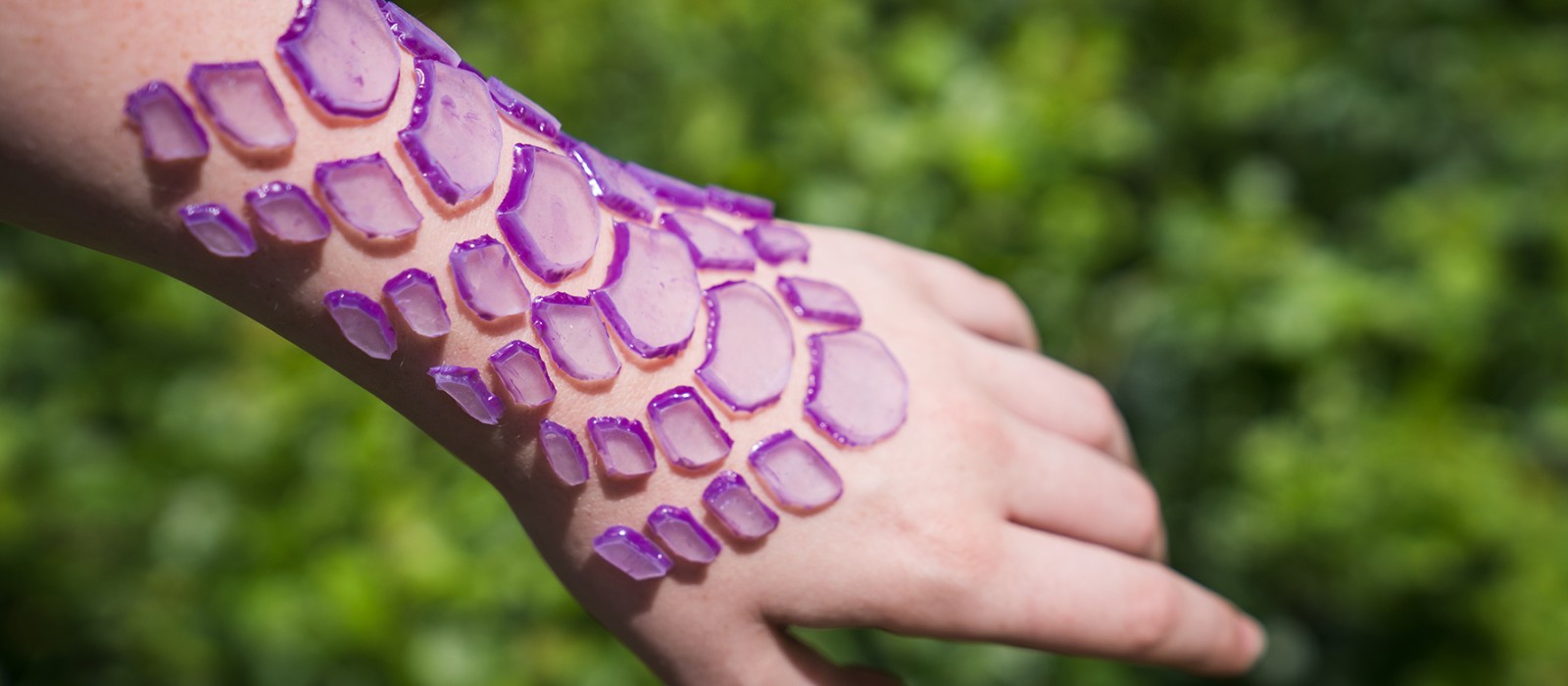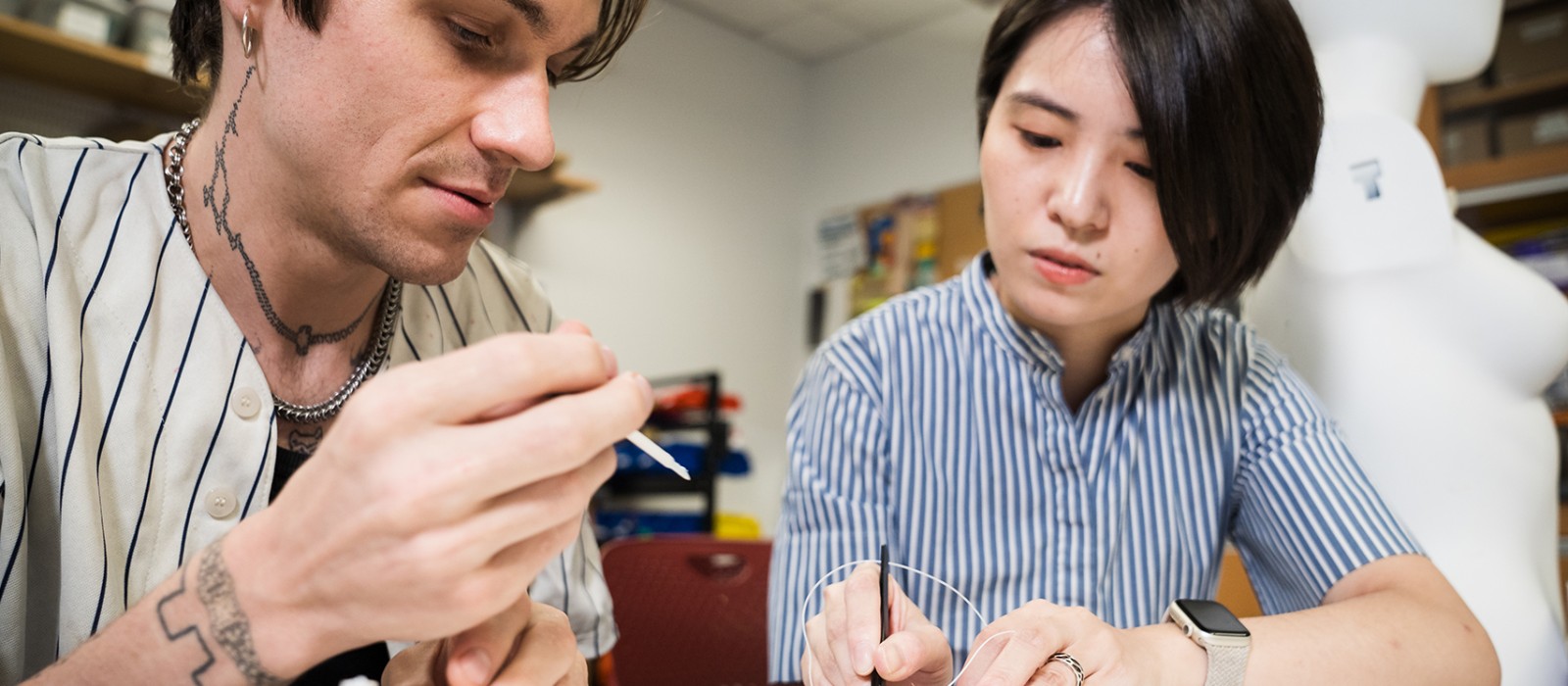Flexible resin scales that change color under UV light like a snake basking in the sun. Silicone-coated conductive tape shaped into a pain relief patch that’s as stylish as it is soothing. An angelic hearing aid that’s both bold art statement and medical device.
These are a few of the captivating creations from Joe George’s time at Cornell Human Ecology this summer, where he bridged the gap between art and technology as the artist-in-residence in the Hybrid Body Lab.

Joe George applying a 3-D tattoo on a model
In the lab, director Cindy Hsin-Liu Kao, assistant professor in human-centered design, brings together digital technology, fashion design and body art to invent beautiful and functional computer interfaces that people can wear on their skin. The residency program, funded by the National Science Foundation, invites artists to collaborate with Kao and her team of researchers, with the goals of exploring the possibilities of technology-involved art practices and expanding access to the emerging technology of on-skin interfaces.
“By bringing in on-skin artists like Joe and enabling them to explore incorporating these technologies into their existing practices, we hope to present an alternative lens to what on-skin tech should (or should not) encompass,” says Kao. “It also helps us think out of the box to understand how on-body artists are working on the scale of the body and how we can create tools to support this process.”
George is a multidisciplinary artist in Brooklyn, New York, who works in painting, three-dimensional modeling and tattooing. He has garnered a significant following on social media, where he shares his unconventional tattoo artwork and artistic inspirations with a community ranging from real clients to tattoo enthusiasts.
George, who views his tattoo work from a printmaking perspective, says the resources available at the Hybrid Body Lab were unlike anything he’s experience before. Moreover, the opportunity to step away from his tattoo work for part of the summer, enabling him to shift his artistic attention on exploring and prototyping diverse, three-dimensional on-skin objects, is what motivated him to apply to the artist-in-residency, says George.

A flexible resin scale tattoo that changes color under UV light
Kao says that as a tattoo artist working in Brooklyn, he brought a new perspective to the lab and gave graduate students an opportunity for interdisciplinary collaboration that isn’t possible in standard academic settings.
“It is an opportunity for them to reflect on the role of the technologies they are designing, and how it may have a broader impact for different communities,” she adds.
Much of the ideation and research in the lab centers on building tools and materials that designers and artists can use to create their own work, says Jingwen Zhu, a second-year Ph.D. student who worked with closely with George throughout the summer.

Jingwen Zhu (right) collaborating with George on wearable 3-D tattoo tech
“Bringing Joe to the lab sparked this conversation between artist and researchers about all kinds of on-body and on-skin technologies,” says Zhu. “In collaborating with Joe, we had non-stop conversation about different available on-skin technology and how they could be combined with the notion of 3-D tattoo. As a graduate student working on wearable technology, what I learned from Joe is how to see the human body as a canvas and use technology to bring meaningful interactions onto it,” says Zhu.
During the residency, George explored different forms and functions of three-dimensional temporary tattoos, investigating diverse materials, prototyping with electronic components and crafting novel on-body interactions. Kao says the projects that resulted from combining George’s artistic vision with the lab’s research and techniques challenge the current paradigm of minimalism in on-skin wearables with audacious designs that beg to be shown instead of hidden.
“It’s been an extraordinarily eye-opening experience spending the summer at Cornell,” says George. “These eight weeks have felt like a paradigm shift in terms of the way I move through the world… it’s so different working in academia compared to the life I live as a tattoo artist. I’m so thankful for this opportunity and for the people I’ve had the pleasure to work with in the lab.”
You can find all the projects, along with tutorials, on the Hybrid Body Lab website.